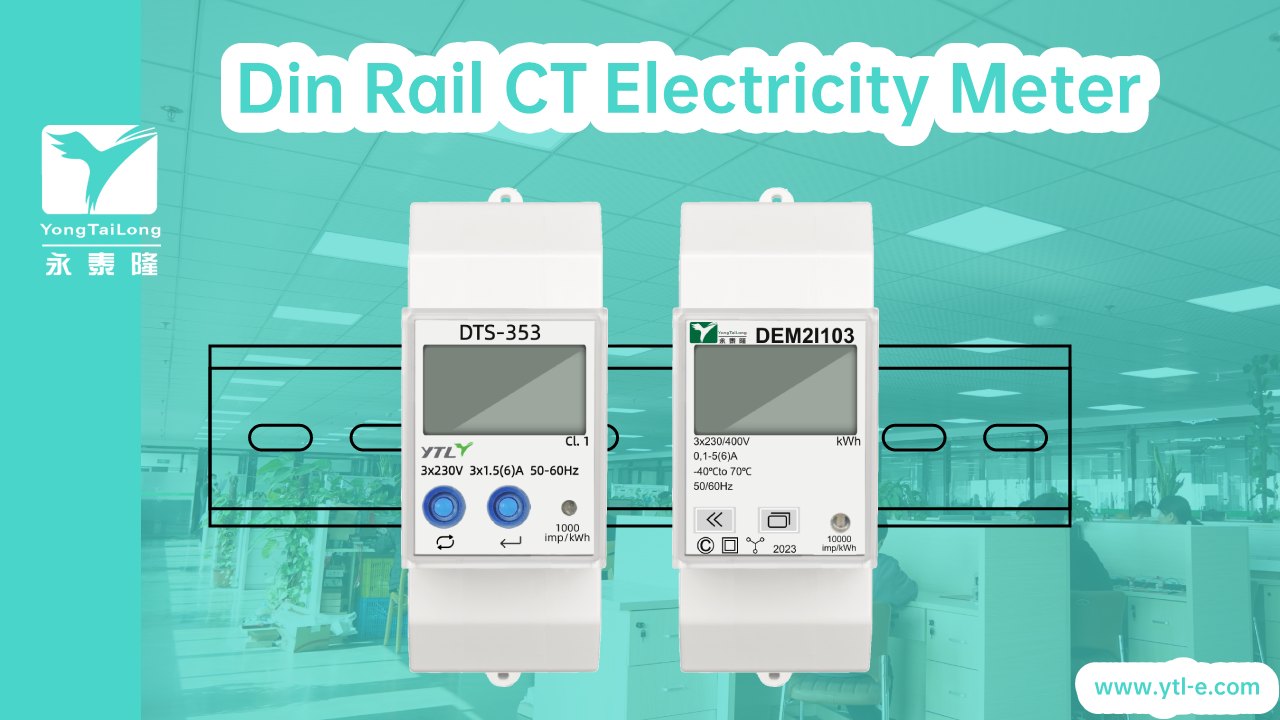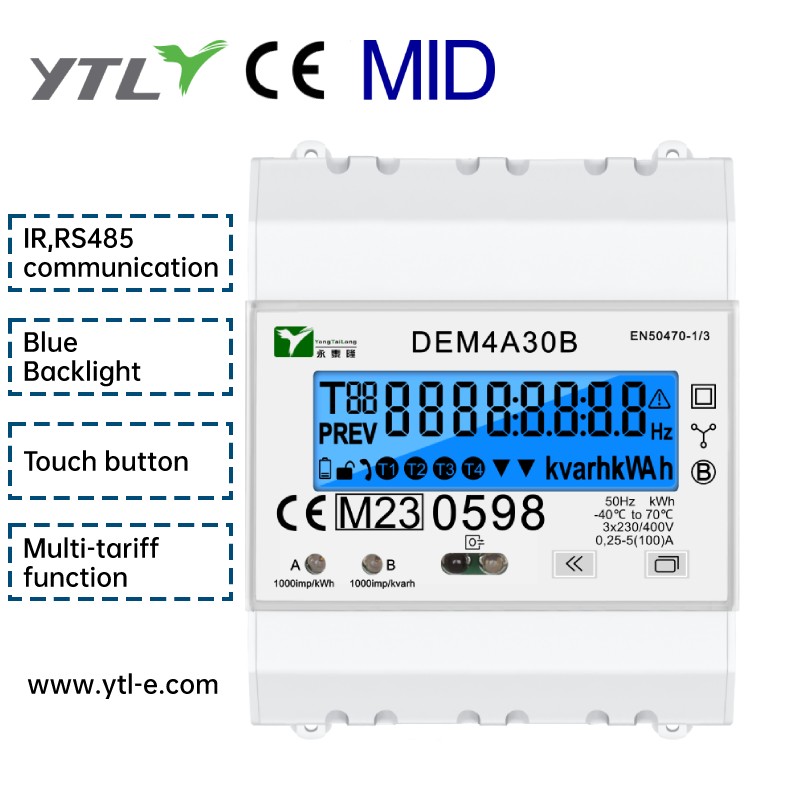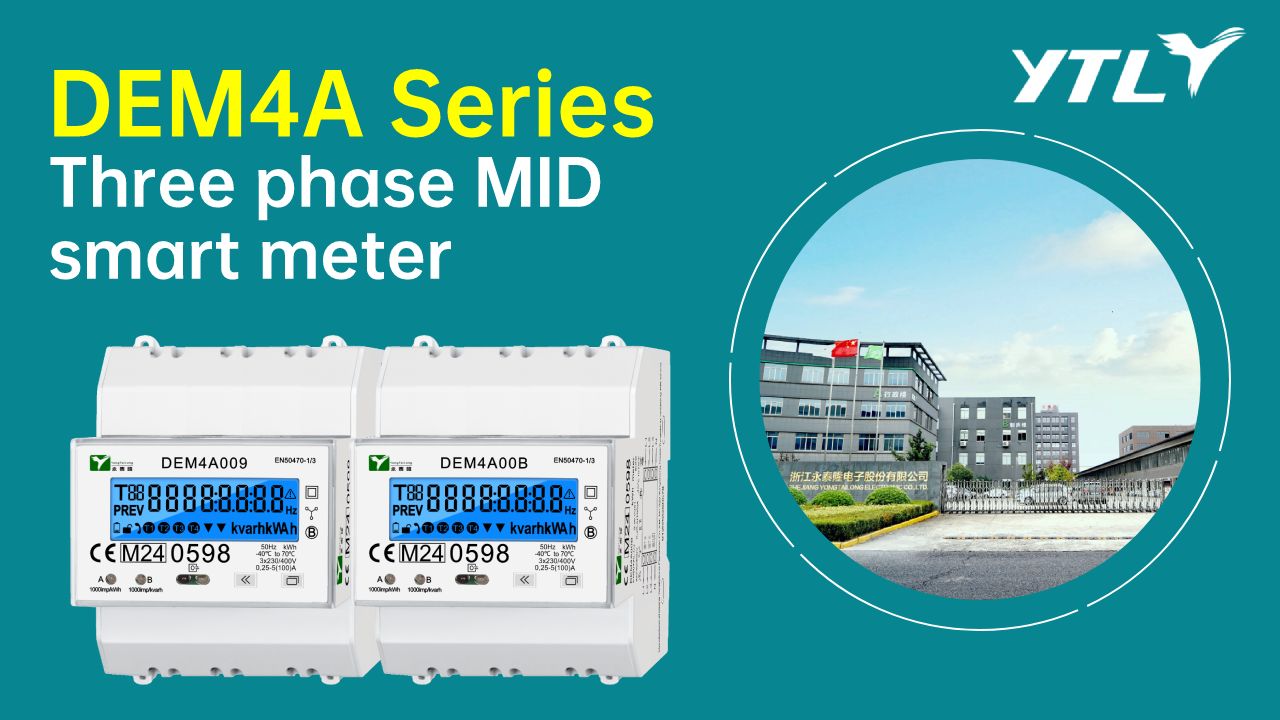Behind the sudden shutdown of industrial production lines, abnormal readings of precision instruments, and transformer overheating and burnout, there is often an underestimated hidden killer - power quality issues. According to statistics, the global manufacturing industry suffers direct losses of over 170 billion US dollars annually due to abnormal power quality, and high-end electricity meters are becoming the core tool to solve this dilemma. This article will systematically analyze the key indicators of power quality, monitoring techniques, and their practical value in industrial equipment protection.
1、 The Three Deadly Threats and Quantitative Standards of Power Quality
The power quality issues faced by modern industrial power systems have evolved from traditional voltage fluctuations and frequency offsets to more complex composite interferences. The International Electrotechnical Commission IEC 61000-4-30 standard defines three core monitoring dimensions:
Voltage event
Including three types of transient fluctuations: Swell, Sag, and Interruption. When the voltage deviates from the rated value by more than 10% for more than 10ms, sensitive equipment such as frequency converters and servo systems may trigger protective shutdowns. High end electricity meters can accurately capture micro voltage dips with a duration of only 1/4 cycle through a sampling rate of 128 points per cycle.
harmonic pollution
The 3rd, 5th, and 7th harmonics generated by nonlinear loads such as frequency converters and electric arc furnaces can cause an additional 130% increase in transformer losses and motor temperature rise exceeding 20 ℃. The IEEE 519-2022 standard requires total harmonic distortion (THD) to be controlled within 5%, and frequency spectrum analysis with a resolution of 0.5Hz must be achieved through FFT algorithm.
Three-phase unbalance
When the load difference between phases exceeds 2%, the risk of local overheating of the motor winding increases by 7 times. High end electricity meters use True RMS measurement technology, which can calculate the proportion of negative sequence components in real time and issue warnings for imbalances above 0.5%.
2、 Five core technological breakthroughs in high-end electric meters
Unlike traditional energy meters that only focus on measuring active power, industrial grade high-end meters achieve quality monitoring and fault prediction through multiple technological innovations
Synchronous phasor measurement unit (PMU)
Based on GPS/Beidou dual-mode clock synchronization technology, microsecond level timestamp recording can be achieved to accurately locate the location of power grid disturbances. In a case study of a certain automobile welding workshop, by comparing the phase angle transition time of multiple electricity meters, the voltage flicker caused by the start stop of the press machine 2 kilometers away was successfully traced.
512 point/cycle sampling architecture
Supports analysis of up to 31 harmonic components, with a detection accuracy of ± 0.1% for sensitive 19th harmonic (950Hz) in data center IT equipment. Combined with waveform capture function, it can store complete transient waveform data of 30 seconds before the fault.
Dynamic benchmark algorithm
Using sliding window standard deviation calculation to automatically identify the normal fluctuation range of the power grid. When there are 17 ± 8% fluctuations in the incoming voltage of a chemical plant within 10 minutes (exceeding the preset ± 5% threshold), the system automatically triggers the capacitor bank switching command.
Multi protocol communication compatibility
Simultaneously supporting multiple protocols such as IEC 61850, Modbus TCP, DL/T645, etc., it can directly connect to SCADA systems to generate PQDIF format reports, meeting the data traceability requirements of ISO 50001 energy audits.
Enhanced environmental tolerance
Through wide temperature testing ranging from -40 ℃ to+85 ℃ and 5G anti vibration certification, the continuous monitoring capability is ensured in harsh scenarios such as steel rolling workshops and outdoor photovoltaic power plants.
3、 Fault prevention strategies for typical industrial scenarios
Scenario 1: Semiconductor wafer fab
To address the sensitivity of lithography machines to voltage dips (tolerance time<20ms), an electric meter with TVR (Tolerable Voltage sag Ride through) prediction function is used. When a voltage drop of 87% is detected and the duration is greater than 15ms, send a switching command to UPS 3ms in advance to avoid a single voltage drop causing the scrapping of million level wafers.
Scenario 2: Offshore wind power operation and maintenance
By monitoring the harmonic resonance trend of the collection line in real-time through the electric meter, when the 23rd harmonic content exceeds 2%, the filtering branch parameters of the SVG reactive power compensation device are automatically adjusted to prevent harmonic overload breakdown accidents of submarine cables.
Scenario 3: Intelligent Warehousing Center
By dynamically adjusting the phase allocation of AGV charging piles using the three-phase imbalance data from the electricity meter, the load imbalance of the distribution transformer was reduced from 4.7% to 0.8%, resulting in an annual reduction of copper loss electricity by 123000 kWh.
4、 Implementation Path of Systematic Solutions
Enterprises need to follow the three-stage principle when building a power quality protection system:
Diagnosis period: Deploy Class A electricity meters to establish a baseline database and continuously monitor raw waveforms for 7 × 24 hours;
Governance period: Targeted compensation will be carried out in combination with APF/SVG and other equipment, and the governance effect will be synchronously verified;
Maintenance period: Set threshold automatic alarm and regularly generate IEEE 1159 compliance reports.
After the implementation of this plan by a certain steel group, the number of abnormal shutdowns of continuous casting machines decreased from 27 times per month to 3 times, and the maintenance cost of power quality faults decreased by 68%.
5、 Future trend: from monitoring and warning to autonomous decision-making
With the penetration of edge computing technology, the new generation of meters have the ability to localize intelligent analysis. For example, when specific harmonic spectrum characteristics are detected, they can be automatically identified as early signs of IGBT faults in the frequency converter, and maintenance prompts can be issued 14 days earlier than traditional vibration monitoring systems. The evolution of converting power quality data into equipment health indicators is redefining the boundaries of industrial preventive maintenance.
Power quality monitoring has evolved from a simple compliance inspection tool to a core infrastructure for industrial equipment reliability management. Choosing high-end electricity meters with 0.2S level accuracy, 1000 event recording capacity, and 10-year life cycle error stability<0.1% will become a key technological investment for enterprises to cope with complex power supply and consumption environments.

 English
English 简体中文
简体中文











.png?imageView2/2/w/500/h/500/format/png/q/100)
.png?imageView2/2/w/500/h/500/format/png/q/100)




